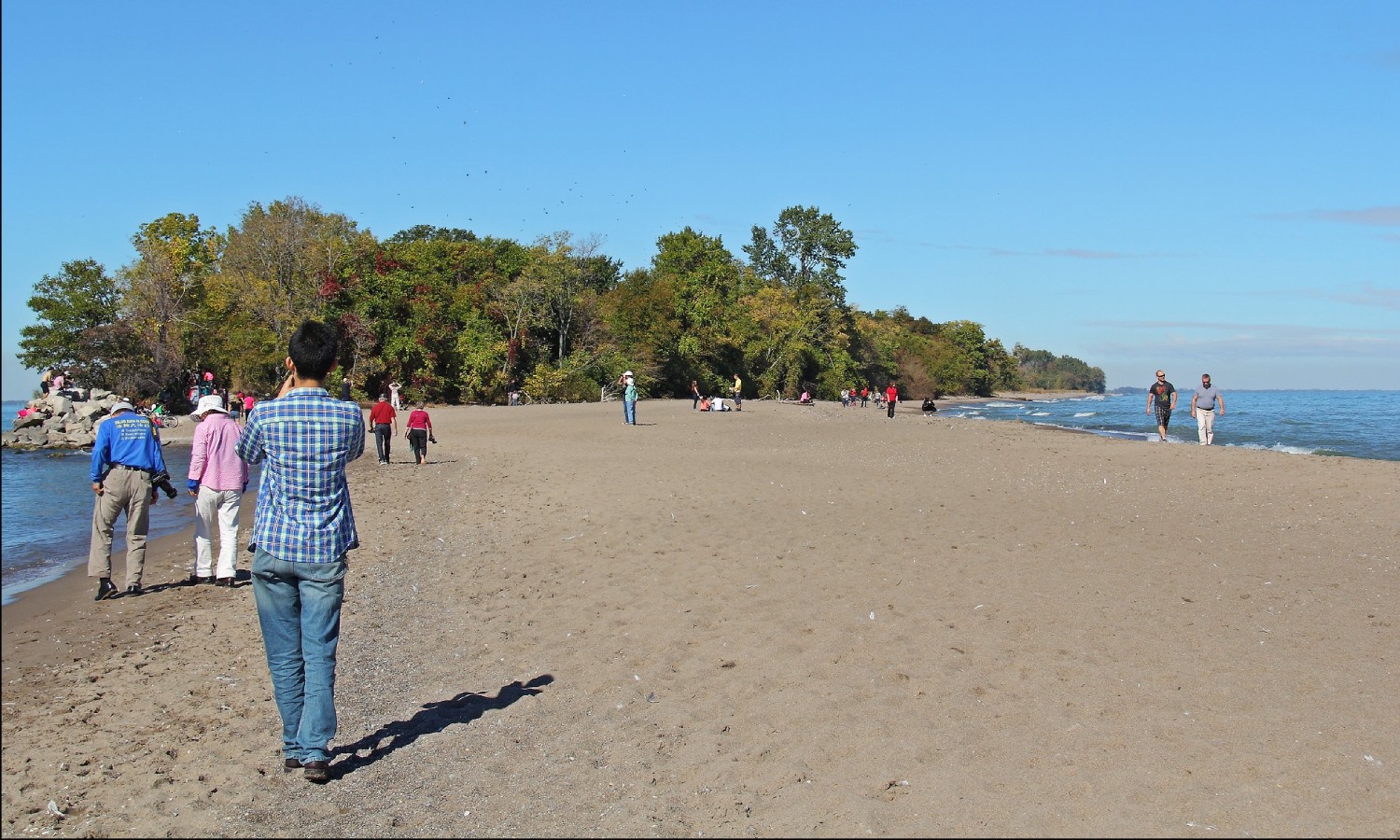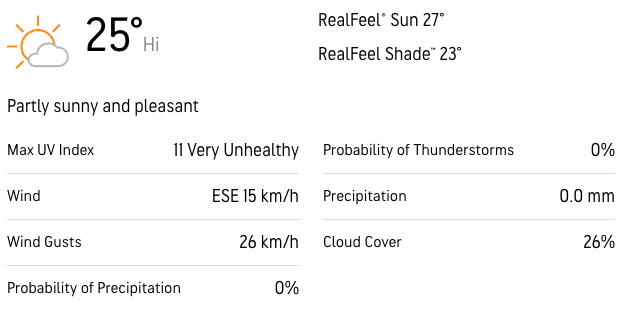There's nowhere quite like Point Pelee, one of the most beautiful spots in this part of Ontario. It's most famous for it's 1.7km boardwalk through the marsh but has plenty more to offer. It's a bit further out from the city but you'll see that it's worth the drive.
We'll start with a stroll along the Marsh Boardwalk Trail, which offers stunning views of Lake Erie and the surrounding wetlands. This is a famous birdwatching spot and we'll look out for local wildlife like herons and turtles.
After our walk, we'll head to the beach for some sun and beach time. The park has several beaches, each with its own unique features, from sandy stretches to rocky shores.

Depending on how we're feeling we'll either hang out at the beach for the rest of the day or explore some of the many trails that wind through the lush forest in the background and cross the shore. On hot summer days, there's nowhere better to be than beside the breeze of the lake.
Hike Length: Short! We'll be exploring short trails around the park including the boardwalk
We'll also be spending time at the beach so pack anything that will make it more comfortable, (light!) chairs, blankets, towels etc.
06:50: Those taking the van meet at the Petrocanada next to Keele Subway Station. Driving to the shuttle location? There's free parking here.
07:00: Shuttle leaves. Please note that we leave dead on time and can not wait for latecomers.
We'll stop at a service station and get breakfast en route.
10:45: Meet self-drivers at Point Pelee National park
10:45 - 15:30: Spend the day in the Park
15:30: Return to Toronto
19:15: Anticipated return to Keele subway station
This custom map is georeferenced, meaning it will show you where you are on the map in the right software and lays out the rough path that we’ll be following. It’s opened with the Avenza app which must be downloaded and installed in advance of the adventure.
You should also download the What3words app - this makes it easy to share and find locations in the unlikely event that you get lost.
Bring a packed lunch, a water bottle and snacks
Sunburn/heat stroke/dehydration - Wear sunscreen and a sun hat. Make sure that you hydrate regularly
Riptides - There are riptides that can quickly carry you out to sea when swimming. Don't swim without first checking that it's safe to do so.
Point Pelee, holds significant indigenous history and cultural significance. The area falls within the traditional territories of several indigenous peoples, primarily the Anishinaabe (specifically the Ojibwe) and the Haudenosaunee (also known as the Iroquois Confederacy).
For centuries, indigenous peoples inhabited the region and relied on its rich resources for sustenance and cultural practices. The area's unique geographical features, such as the marshes, forests, and proximity to Lake Erie, provided diverse ecosystems that supported hunting, fishing, and gathering activities.
Indigenous communities in the Point Pelee area developed intricate knowledge of the natural environment and practiced sustainable land management techniques. They utilized the wetlands for hunting waterfowl and other wildlife, and the surrounding forests for gathering medicinal plants, berries, and other food sources. These activities were not only crucial for survival but also deeply embedded in their cultural traditions and spiritual beliefs.
With the arrival of European settlers in the 18th century, the lives of indigenous peoples in the region were significantly impacted. The encroachment of settlers led to land dispossession, forced relocations, and the disruption of traditional ways of life. Indigenous populations experienced the devastating effects of diseases brought by European contact, which caused significant population declines.
Today, indigenous peoples continue to maintain their cultural connections to the area. Efforts are being made to preserve and revitalize indigenous languages, cultural practices, and traditional ecological knowledge. Collaborative initiatives between indigenous communities and governmental bodies aim to ensure the protection of sacred sites, promote indigenous representation, and foster reconciliation and respect for indigenous rights.
Point Pelee National Park, established in 1918, recognizes the cultural significance of the area and aims to preserve its natural and historical heritage. The park collaborates with indigenous communities in the management and interpretation of the park's resources, facilitating a greater understanding and appreciation of the indigenous history and ongoing presence in the region.
There's nowhere quite like Point Pelee, one of the most beautiful spots in this part of Ontario. It's most famous for it's 1.7km boardwalk through the marsh but has plenty more to offer. It's a bit further out from the city but you'll see that it's worth the drive.
We'll start with a stroll along the Marsh Boardwalk Trail, which offers stunning views of Lake Erie and the surrounding wetlands. This is a famous birdwatching spot and we'll look out for local wildlife like herons and turtles.
After our walk, we'll head to the beach for some sun and beach time. The park has several beaches, each with its own unique features, from sandy stretches to rocky shores.

Depending on how we're feeling we'll either hang out at the beach for the rest of the day or explore some of the many trails that wind through the lush forest in the background and cross the shore. On hot summer days, there's nowhere better to be than beside the breeze of the lake.
Hike Length: Short! We'll be exploring short trails around the park including the boardwalk
We'll also be spending time at the beach so pack anything that will make it more comfortable, (light!) chairs, blankets, towels etc.
06:50: Those taking the van meet at the Petrocanada next to Keele Subway Station. Driving to the shuttle location? There's free parking here.
07:00: Shuttle leaves. Please note that we leave dead on time and can not wait for latecomers.
We'll stop at a service station and get breakfast en route.
10:45: Meet self-drivers at Point Pelee National park
10:45 - 15:30: Spend the day in the Park
15:30: Return to Toronto
19:15: Anticipated return to Keele subway station
This custom map is georeferenced, meaning it will show you where you are on the map in the right software and lays out the rough path that we’ll be following. It’s opened with the Avenza app which must be downloaded and installed in advance of the adventure.
You should also download the What3words app - this makes it easy to share and find locations in the unlikely event that you get lost.


Bring a packed lunch, a water bottle and snacks
Sunburn/heat stroke/dehydration - Wear sunscreen and a sun hat. Make sure that you hydrate regularly
Riptides - There are riptides that can quickly carry you out to sea when swimming. Don't swim without first checking that it's safe to do so.
Point Pelee, holds significant indigenous history and cultural significance. The area falls within the traditional territories of several indigenous peoples, primarily the Anishinaabe (specifically the Ojibwe) and the Haudenosaunee (also known as the Iroquois Confederacy).
For centuries, indigenous peoples inhabited the region and relied on its rich resources for sustenance and cultural practices. The area's unique geographical features, such as the marshes, forests, and proximity to Lake Erie, provided diverse ecosystems that supported hunting, fishing, and gathering activities.
Indigenous communities in the Point Pelee area developed intricate knowledge of the natural environment and practiced sustainable land management techniques. They utilized the wetlands for hunting waterfowl and other wildlife, and the surrounding forests for gathering medicinal plants, berries, and other food sources. These activities were not only crucial for survival but also deeply embedded in their cultural traditions and spiritual beliefs.
With the arrival of European settlers in the 18th century, the lives of indigenous peoples in the region were significantly impacted. The encroachment of settlers led to land dispossession, forced relocations, and the disruption of traditional ways of life. Indigenous populations experienced the devastating effects of diseases brought by European contact, which caused significant population declines.
Today, indigenous peoples continue to maintain their cultural connections to the area. Efforts are being made to preserve and revitalize indigenous languages, cultural practices, and traditional ecological knowledge. Collaborative initiatives between indigenous communities and governmental bodies aim to ensure the protection of sacred sites, promote indigenous representation, and foster reconciliation and respect for indigenous rights.
Point Pelee National Park, established in 1918, recognizes the cultural significance of the area and aims to preserve its natural and historical heritage. The park collaborates with indigenous communities in the management and interpretation of the park's resources, facilitating a greater understanding and appreciation of the indigenous history and ongoing presence in the region.